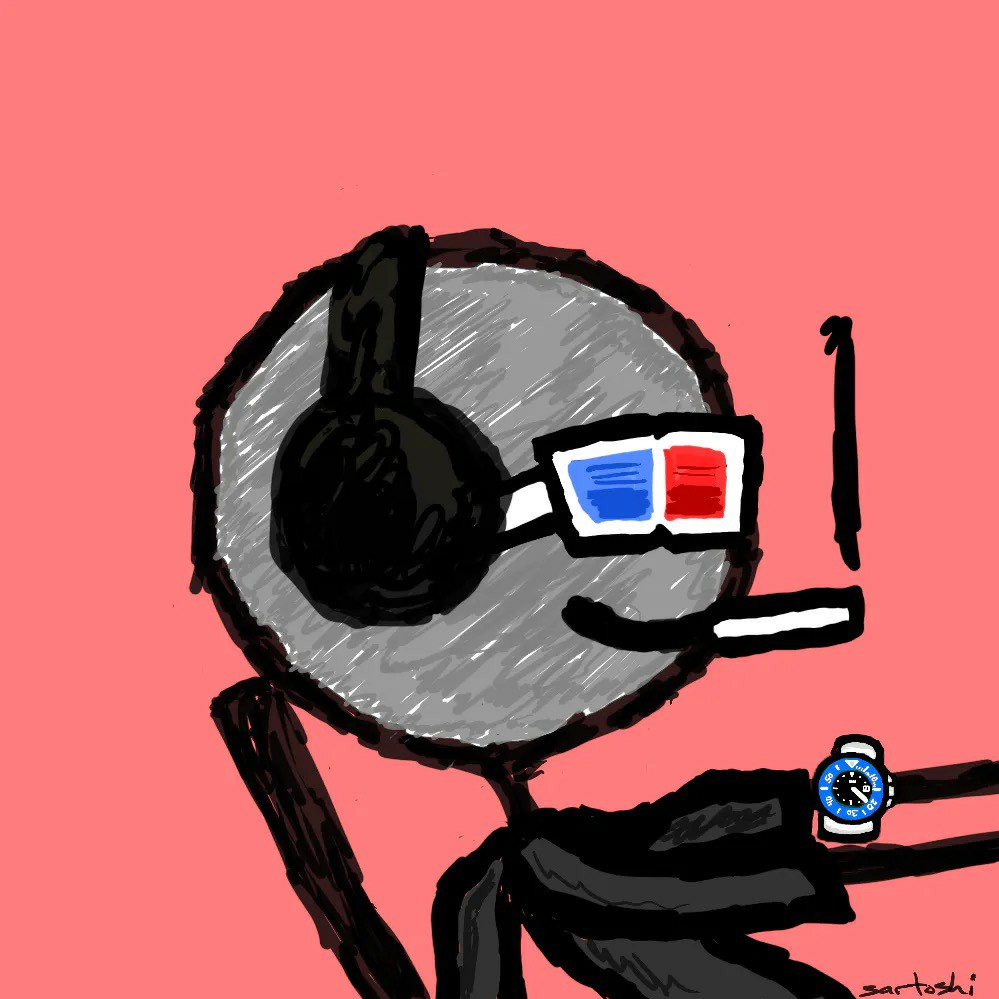イーサリアムは2.0時代に突入、新星NEARがパブリックチェーンを突破する道はどこにあるのでしょうか?
プロデュース | Odaily (ID:o-daily)
プロデュース | Odaily (ID:o-daily)
パブリックチェーンの進化を核として、ブロックチェーン産業の発展は大きく3つの段階に分けられます。
ビットコインは「オープン通貨」への扉を開き、分散型通貨に対する人々の想像力を解放しました。
イーサリアムのスマート コントラクトはアプリケーションの可能性を解き放ち、ステーブルコイン、融資契約、DEX、およびそれらの組み合わせなどのコンポーネントにより、分散型の「オープン ファイナンス」が現実になります。
理想的な次の段階では、「オープン ファイナンス」の範囲がさらに拡大され、すべての高価値データをカバーし、「オープン ネットワーク」に移行します。将来の適用範囲の拡大に伴い、ユーザー数とトランザクション数の拡大により、ブロックチェーンの負荷容量に対する要件がさらに高まることは間違いなく、拡張とアップグレードは不可欠です。
「オープンネットワーク」の時代をリードするために、主要なパブリックチェーンは今年、その進歩を加速するために独自の「超自然的な力」を考案し、将来の路線で新たなランキングを獲得しようとしている。
5 月、「クロスチェーンの王」および「Web3.0 のオープナー」として知られる Polkadot は、主要なネットワーク候補ネットワークである Polkadot CC1 を立ち上げました。
10月には、無限に拡張できる「キング・オブ・シャード」であるNEARメインネットが第2フェーズに移行し、トークン転送、アカウント作成、検証への参加、投票ガバナンス、アプリケーションの起動などのネットワーク機能がオープンしました。
12 月に ETH 2.0 ジェネシス ブロックが発掘され、イーサリアムがついに PoS と拡張の道に乗り出したことが示されました。
……
今なお高い注目を集めるスターパブリックチェーンは、技術的にはセキュリティと分散化の確保を前提にスケーラビリティへの取り組み、環境的には言語や開発ツールと環境の開発、移行コストの削減という「3つの軸」に主に依存している。開発者にとっての使いやすさは他の側面でも考慮されており、ポジショニングに関しては、より明確な垂直方向のシーンから始めて、インターネットを変革するという壮大な物語について話します。
今回は、近年急速な生態系発展を遂げているNEARに焦点を当てます。
これに注目する理由は単純です。ETH 2.0 が持つべきもの (POS メカニズム + 高 TPS + 低ガス) が、何度も延期されてきたものをすべて備えているからです。同時に、NEARはクロスチェーンの点で非常にターゲットを絞っており、Rainbow Bridge(レインボーブリッジ)の助けを借りてイーサリアムとの相互運用性を実現し、EVM(イーサリアム仮想マシン)と周辺ツールのフルセットをサポートしています。このような技術サポートにより、ユーザー、APP、または開発者は許可なくイーサリアムと NEAR の間でアセットからエクスペリエンスへの転送を完了できます。
副題
レインボーブリッジに立ってイーサリアムエコロジカル開発者に会う
昨年のドラゴンフライサミットで、V神はこのプロジェクトについて「NEARは非常に良い仕事をしているので、不安になる」と率直に語った。
私たちの意見では、ETH 2.0のビジョンに似ていることに加えて、イーサリアムに対するNEARのより大きな脅威は、クロスチェーン技術であるレインボーブリッジからもたらされます。
レインボー ブリッジは、イーサリアムと NEAR ネットワーク間の相互運用性への第一歩です。この背景には次の 3 つのことが考えられます。
双方のトークンのユーザーと投資家にとって、レインボーブリッジを通じて資産をチェーン間で相互リンクすることができます。
イーサリアム アプリケーション開発者にとって、スマート コントラクト コードを変更する必要はなく、EVM アプリケーションを NEAR ブロックチェーン プラットフォームに直接デプロイして、大幅なパフォーマンスの向上を実現できます。
DApp開発者やイーサリアムのユーザーにとっては、本来のコミュニティやエコロジーを放棄することなく、ウォレットなどの使い慣れたツールを利用してETH 2.0を先行体験することができます。
レインボー ブリッジの技術原理は、多くの計算を行わずにチェーンの状態を追跡できる 2 つのライト クライアントが連携して動作することです。1 つは Rust 言語で (NEAR コントラクトとして) 実行される Ethereum ライト クライアントで、もう 1 つは Ethereum ライト クライアントです。 NEAR ライト クライアントの Solidity Language 実装 (イーサリアム コントラクトとして)。同時に両者はトラストレス方式で追跡状況を検証し、最終性を確認した上で中継層を介して相手のエコ利用にデータを転送する。 (日々のメモ: 詳細に興味のある開発者の方は、こちらへようこそGithub画像の説明
Rainbow Bridge テクノロジーで実行されるライト クライアントの簡略図
したがって、Rainbow Bridge は、自己信頼、許可なし、マルチ署名なし、完全な分散化という特性を備えており、NEAR のメイン ネットワークに導入され、現在複数のイーサリアム DeFi プロジェクトによるプライベート テストに利用できます。 NEARのプロダクトマネージャー、アレックス・シェフチェンコ氏(物理学博士、元ビットフューリー幹部)が「NEARのクロスチェーン技術は市場より6~9か月先を行っている」と自信を持って信じているのも不思議ではない。
商業プロモーションの観点から見ると、NEAR のクロスチェーンは非常にターゲットを絞ったものであることに気づきましたか?
比較してみましょう。クロスチェーンの概念に着目したPolkadotは現在、同型クロスであるPolkadotシステムにおける異なるアプリケーションチェーン間の連携であるパラレルチェーン間の接続(シャードチェーン)に関するクロスチェーンの研究開発に注力している。鎖。 Polkadot とは異なり、NEAR はイーサリアムのエコシステムを直接ターゲットにしており、虹の橋の上に立って多数のイーサリアム開発者を歓迎しています。レインボーブリッジの技術的な難易度もさらに高く、2 つの独立した基盤となるパブリック チェーンを接続する、本当の意味での異種クロスチェーンです。
NEAR Asiaの責任者であるAmos Zhang氏によると、レインボーブリッジの発展はNEARのクロスチェーン青写真(資産移行)の最初のステップにすぎず、第2ステップはEVMをサポートし、契約の直接クロスチェーンコールを実現すること(契約移行)であるEVM(エクスペリエンス・マイグレーション)を完全サポートする周辺ツールです。
成熟した開発者向けに、NEAR は実行環境での EVM のサポートを提供するため、いくつかの簡単な手順を実行するだけで既存の Ethereum コントラクトを NEAR にデプロイできます。 (日常のメモ: 開発者の場合は、次のように入力してください)https://github.com/関連リソースを取得します。 ) 初心者の開発者のために、NEAR は Web ページに統合された IDE ツール (Gitpod) を起動し、Docker ベースのイメージをロードし、プログラミング言語/プラットフォームのバージョンを選択して、関連コンポーネントを自動的にインストールしました。開発者がいつでもコードを変更できるように、完全なプロジェクトが組み込まれたターミナルもあります。開発者は、あらゆるアプリケーション パラダイムを通じてしきい値ゼロで DApp を作成できるため、NEAR での開発のしきい値が大幅に下がります。 (日常のメモ: 開発者の場合は、次のように入力してください)https://near.org/関連リソースを取得します。 )
スマート コントラクト開発言語に関しては、NEAR は Rust と AssemblyScript をサポートしています。 Rust はより高いセキュリティを提供しますが、AssemblyScript は Javascript に基づいており、より大規模な開発者コミュニティがあるため、フロントエンドでのアプリケーションの迅速な開発が容易になります。
画像の説明
NEAR Drop の仕組み
イーサリアムのエコロジー開発者の支持を得るために、NEAR は開発エクスペリエンスの最適化において多くの詳細を考慮していることがわかります。
副題
「Grants + OWC」モデルで開発者をサポートおよび強化
開発のためにNEARに開発者を誘致するだけでは十分ではありません。また、開発者のモチベーションを長期間維持し、ネイティブ プロジェクトに指導と非財務的サポートを提供することも特に重要です。 NEARは、開発者の育成と統合に「Grants + OWC」のデュアルモードを採用しています。
助成金は主に、収益モデルが不明確な一部のインフラストラクチャ ツール (ウォレット、インデクサー、ブロック エクスプローラー、その他の生態学的コンポーネントなど)、さらには科学研究プロジェクトに対しても提供されます。プロジェクトは資金を直接申請できます。
OWC はスタートアップ プロジェクト向けの国際的なブロックチェーン アクセラレータであり、基礎となるプロトコルに束縛される必要はありません。各セッションは 12 週間続き、15 チームが参加します。これらのチームは、OWC 内で起業家精神に基づいたアイデアを検証します。 OWC は、プロジェクトの製品開発、KPI 設定、市場探索、資金調達などの側面で支援を提供します。
副題
NEARエコロジーの段階的な結果と将来の配置
画像の説明
NEAR生態系マップ
この図は、NEAR を中心にこれまで、現在、そしてこれから構築されるプロジェクトのリストを示しています。Chainlink、Maker、AAVE、IPFS など、多くのスター プロジェクトがあります。
10月以来、DEXアグリゲーター1インチ、統合NFTプラットフォームMintbase、DeFiプロジェクトBalancer、安定通貨TUSDなど、いくつかのイーサリアムエコシステムプロジェクトがNEARエコシステムに参入すると発表しました。
1. Mintbase がイーサリアムから NEAR に移行した後、NEAR の優れたスケーラビリティ、シンプルな開発エクスペリエンス、使いやすいユーザー エクスペリエンスを活用して、誰もが NFT を利用できるようにしました。
Mintbaseの創設者であるネイト・ガイアー氏は、「イーサリアムからの脱出」について語った際、「以前はイーサリアムにストアを展開する価格は約2ドルだったが、今では価格は250ドルを超え、5つのNFTを作成するだけで約250ドルになっている」と語った。 「50ドル。私たちのビジョンは、将来いつかNFTの形でさまざまなチケットを販売することですが、これは現在のイーサリアムの状況ではまったく実現不可能です。」 Polkadot、Ethereum 2.0、Elrond、EOS、After Cosmos、および他のプラットフォームでは、NEAR の利点は次のような点に反映されていると考えています。一般の人が読み取れるアカウント アドレスと契約アドレス、進歩的なセキュリティ、Rust または AssemblyScript の契約言語、POS コンセンサス、動的な再シャーディング、安くて速くて使いやすい、などです。 。同氏はまた、NEARには現在インデクサーが不足している可能性があると指摘した(Odaily注記:NEARはThe Graphのパブリックチェーン候補リストに登場しており、その開発者のDavid Kajpust氏はかつてCompoundがさまざまなパブリックチェーンをベースに秘密裏に開発していると語っていた)。
2. 11月3日、NEARは、資産トークン化プラットフォームであるTrustTokenが、米ドルに固定されたステーブルコインTrueUSD(TUSD)をNEARメインネット上でローンチする予定であり、2020年末か2021年初めにローンチされる予定であると正式に発表しました。
TUSD の現在の市場価値は 3 億 3,000 万米ドルを超え、世界のステーブルコインのトップ 5 にランクされ、世界中の 80 以上の取引所と 20 以上の OTC 加盟店によってサポートされています。 DeFiブーム期に、TrustTokenはイーサリアムの混雑が製品の機能や使いやすさに支障をきたすという認識が強まっていたため、レインボーブリッジを経由して安全に無断でNEARにブリッジし、ガス料金を低水準に抑えることが期待されています。分単位からブロック生成の 1 秒、ファイナリティ確認の 3 秒まで、より幅広い DeFi、NFT、予測、支払いシナリオをサポートし、よりオープンなネットワークのユースケースの基盤となります。
3. ちょうど11月25日、ヘッドアグリゲーションDEX 1inchは、NEARとイーサリアム間の相互運用性のさまざまな可能性を探るため、同社が開発した自動マーケットメーカープロトコルMooniswapを同時にNEAR上に導入すると発表した。
1インチCTOのアントン・ブコフ氏(NEARでレインボーブリッジの開発を担当し、現在もレインボーブリッジテクノロジーの高レベル設計を指導している)によると、NEARシャーディングに基づいたMooniswap DEX(分散型取引所)を立ち上げる予定だという。モデルであり、来年には無限に拡張可能です。)。同氏は、新しいシャーディング DEX の構築に NEAR を選択した理由を次のように説明しました。「非シャーディング ブロックチェーン上に DEX を構築すると、ブロックチェーンが拡張のボトルネックになるだけでなく、スマート コントラクトもボトルネックになります。非同種シャーディング ブロックチェーン (Polkadot など) ETH 2.0) は、スマート コントラクトが自動的にシャード化されず、すべてのトランザクションが単一のシャードで完了する必要があるため、非シャード ブロックチェーンよりもそれほど高速ではありません。」
この点に関して、NEARの共同創設者イリア・ポロスキン氏はかつて最近のAMAで、「DeFiは我々が好む分野であり、NEARは1~2秒のファイナリティと低い取引コストを提供できる。これは多くのグループの注目を集めることが期待される」と述べた。 Rainbow Bridge と EVM の実行環境を通じて、Mooniswap、Balancer、Aave などのイーサリアム上の DeFi プロジェクトを低コストかつ迅速に NEAR にデプロイできます。
上記のプロジェクトに加えて、中古携帯端末取引プラットフォーム Glyde (年間収益 5 億ドルを超える伝統的な携帯電話販売会社である PCS Wireless が開始)、競馬ゲーム プラットフォーム Zed Run、ピクセル チェーン ゲーム Berry流動性マイニングを導入するクラブ、カード(NFT)取引プラットフォームParas、オープンマーケットプロトコルFluxなどのデジタルネイティブプロジェクトがNEARネットワーク上で立ち上げられています。
8 月 22 日にメインネットを開始した Flux (NEAR プロトコルに基づいて構築および開始された最初のプロトコル) を例に挙げると、ダイナミック シャーディング、ランダム ビーコン、完全な開発ツール、およびイーサリアムの相互運用性が、Flux が NEAR を選択した理由です。 。このような基本的なサポートにより、Flux のユーザーは 0.01 ドル未満の取引手数料で予測市場を作成し、取引することができます。
NEARのビジネス開発ディレクターであるサーシャ氏は、モバイルゲームのピアツーピア競争プラットフォームOPゲーム、トレーダーソーシャルネットワークYanda、ファン交流を含む17のアプリケーションが2021年2月までにNEARメインネットに登場すると推定されていると述べた。プラットフォームArterra、チェーンゲームHash Rush、DAO連携ツールAbridgedら。
この基盤となる移行の規模は、上位レベルのアプリケーションによる NEAR の認識を反映しており、その技術的な利点の恩恵を受けると同時に、NEAR エコシステムも強化されます。
副題
無制限の拡張を支える Nightshade プロトコル
レインボー ブリッジに加えて、NEAR 拡張エコロジーにはもう 1 つの重要な技術的基礎があります。それは、独自のシャーディング テクノロジーを通じて拡張を実現することです。
DeFiに深く関わっている投資機関であるD1 Venturesは、かつてNEARとイーサリアム2.0、ポルカドット、コスモスなどのプロジェクトの技術的な違いを詳細に比較したことがある。 D1 Ventures では、構造の違いに応じて、基盤となるレイヤー 1 パブリック チェーンを「DApp チェーン」と「クロスチェーン プラットフォーム」の 2 つのカテゴリに分類します。 「DApp チェーン」は、すべての DApp が共通の Layer1 上に構築され、基礎となるチェーンのセキュリティとパフォーマンスを共有することを期待しています。DApp 自体は独立したチェーンを持たず、DApp のセキュリティとガバナンスを考慮する必要はありません。このようなパブリックチェーンの代表的なものは、イーサリアムと NEAR です。
イーサリアムとは異なり、NEAR のブロック内シャーディング ソリューション (Nightshade ナイト シャドウ プロトコルとしても知られる) は非常に創造的であり、そのアーキテクチャと技術的な実装も異なります。
具体的には、断片化構造の観点から見ると、イーサリアム2.0やPolkadotはビーコンチェーン(リレーチェーン)と複数の断片化チェーン(チェーン)の確認で構成されており、クロスシャードトランザクションの遅延が発生し、システム全体の拡張性が高くなります。また、ビーコン チェーン自体の拡張機能によっても制限されます。しかし、NEARは複数のシャードチェーンを保持するアーキテクチャではなく、ブロック内でシャードを保持するアーキテクチャを採用しており、各検証ノードが保持するチェーンは1つだけでよく、シャード間のトランザクションの確認に必要なブロックも1つだけで済むため、シャーディングの問題が解決されます。チェーン構造のトランザクション遅延問題。
同時に、Yeying プロトコルは動的再フラグメンテーションもサポートしており、フラグメントの数はネットワークの使用状況に応じて動的に調整されます。現在の最適化されていない状態では、各シャードはすでに 1 秒あたり 1000 トランザクションの容量をサポートできます。さらに、NEAR のシャーディングは水平方向にスケーラブルであるため、10 個のシャードで 10,000 TPS、100 個のシャードで 100,000 TPS に達することができ、理論的にはシャード数に上限はありません。
Night Shadowプロトコルの導入には、状態とデータの可用性の有効性を確認する方法、さまざまな悪意のある動作に対する罰メカニズム、ブロックプロデューサーと検証ノードの2つの役割の作業内容などの詳細も含まれています。興味のある読者は次の場所で見つけることができます。https://mp.weixin.qq.com/詳しくはこちらをご覧ください。
設計コンセプトの観点から見ると、Yeying Protocol はパブリック チェーンのスケーラビリティを解決するだけでなく、構成可能性、シャード間の通信遅延、シャード間のトランザクション手数料などの問題も解決しようとしています。これらの試みにより、「シャーディングの王」に近い評判が得られました。
副題
NEAR は将来のイーサリアム 2.0 です
この時点で、NEAR とイーサリアム 2.0 が伝えているストーリーはほぼ同じであることがわかります。どちらも POS コンセンサスメカニズム + 拡張であり、どちらも高い TPS と低いガス料金を示しています。 NEAR には、イーサリアム 2.0 がどうあるべきかが備わっています。
1.x バージョンから残された多くの歴史的問題により、イーサリアム 2.0 は何度も「バウンス」しました。以前のロードマップから判断すると、イーサリアム 2.0 のフェーズ 0 はプレッジ デポジットのみをサポートし、フェーズ 1 でシャードのデプロイが開始され、フェーズ 2 で転送がアクティブ化される可能性があり、全プロセスが完了するには数年かかると推定されています。 (日々のメモ: イーサリアム シャーディング開発の進捗が遅いため、最近のコア開発者会議で、ヴィタリック氏はイーサリアム 2.0 でのシャード拡張計画を放棄し、ロールアップ垂直拡張計画に参加する可能性があると述べました。シャードの展開は予定通りになる可能性があります)イーサリアム 3.0 に延期されました。)
同時に、既存のエコロジーをいかにスムーズにバージョン2.0に導入していくかがイーサリアムの大きな課題でもある。たとえば、2.0 ネットワーク構造では、シャード間のトランザクションの順序を確認し、DeFi の構成可能性を考慮する方法がまだ解決されていません。
イーサリアム 2.0 がまだ「空中の城」であるウィンドウ期間中、他のパブリック チェーンはキャッチアップを加速し、イーサリアムのオーバーフロー価値を引き受ける機会があります。 NEARは後発のアドバンテージをうまく活用している。 2018 年 8 月にプロジェクトが開始されて以来、メインネットの漸進的リリース (PoA バージョン、制限付きフェーズ、フェーズ 2) を実現するまでに、わずか 26 か月近くかかりました。
今年 10 月に NEAR メインネットは第 2 フェーズへの移行に成功し、基本的にすべてのネットワーク機能がオープンになりました。これで、誰でもトークンの送受信、アカウントの作成、検証への参加、ガバナンスへの投票、アプリケーションの起動、その他の方法で NEAR ネットワークを使用できるようになります。
11月3日に開催された第2回タウンホールオンラインコミュニティミーティングでは、数人のコアメンバーがシャーディングやレインボーブリッジなどのコア部分の最新の開発進捗状況を公開した。 Lianchuang Alex Skidanov 氏は、NEAR はテスト ネットワークでシャーディングを開始し、2021 年にテスト ネットワークでシャーディング機能をテストする予定であると述べました。機能が完了した後、コミュニティはメイン ネットワークでシャーディングをいつ開始するかを決定します。現在、1 つのシャードで 1 秒あたり 1,000 トランザクションを処理できますが、テクノロジーが成熟した後は、シャードの数を増やすことでメイン ネットワークの TPS を 2 倍にできるようになります。
Yilong氏はまた、Rainbow Bridgeの開発は第3段階に入っており、現在メインネットワーク上で非公開テストを行っており、後にバージョン1.0がリリースされ、誰もがこのツールをトラストレスな方法で使用できるようになると述べた。同時に、NEAR は EVM の導入に熱心に取り組んでおり、いくつかの初期作業が完了し、今月ベータ版がリリースされました。その時点で、開発者はテストネット上で既存の Ethereum ツールを使用してコントラクトをデプロイできるようになります。
開発の進捗状況だけを見ると、NEAR + ETH 1.x によるネットワークの拡張は、ETH 2.0 の完全実装よりも早いと思われます。
しかし、今日のパブリック チェーンの競争はもはや単なる技術的な比較ではなく、生態学的断片化と規模の差により、先行者と後発者の間には埋めるのが難しい大きな差が生じています。テクノロジーとエコロジーの関係について、アモス氏は「これは古典的な鶏が先か、卵が先かの問題です。より優れたスケーラビリティを持つ新しいチェーンのほとんどは、イーサリアムのような大規模な金融インフラを持たず、有機的成長の機会に欠けています」と考えています。 「開発者コミュニティはこれ以上アプリケーションを開発し続けることはできず、NEARはイーサリアムを破壊することを望んでいませんが、実用的にWin-Winの協力の開発の道を選択しています。」
NEARは、最下位層のスケーラビリティ、中間層の最適化、アプリケーション層の成熟したツールを利用して、開発者とユーザーにシンプルでフレンドリーなエクスペリエンスを提供し、イーサリアム2.0の機能を先行試してみる予定です。
副題
「オープンネットワーク」の下でのパブリックチェーンの競争環境
エコロジー構築からクロスチェーン + シャーディングなどの技術サポートまで、NEAR はイーサリアムとの競合だけに留まりません。次の「オープン ネットワーク」時代には、主流のパブリック チェーンが 10 未満に満たされる可能性があります。しかし問題は、どのパブリックチェーンが最初に「オープンネットワーク」をオープンするのかということだ。
現在の「キング・オブ・パブリックチェーン」は当然、その称号を守る気概を持っている。
11 月 5 日の早朝、イーサリアム 2.0 バージョンのデポジット契約が正式にリリースされ、12 月 1 日、イーサリアムは「遅くて高価」という長年の病気を治すために正式にアップグレードの道を歩み始めました。 DeFiがその境界を拡大し、より高い価値を運び、他のオンチェーンアプリケーション分野がDeFiを引き継ぐにつれて、拡大しないことは不可能であることは誰もが予測できます。しかし、イーサリアムの数百億ドルレベルの生態系規模は利点であると同時に負担でもあり、イーサリアムは一歩を踏み出すたびに躊躇し、ゆっくりとした動きをします。
新世代のパブリック チェーンにはイーサリアム 1.x に比べて技術的な利点があり、さまざまな利点と背景もさまざまなパブリック チェーンの位置付けを決定します。
NEAR のチーム メンバーは、継続的に成功した起業家精神、シャーディング エンジニアなどの経験を持っています。ほぼすべての開発メンバーは Microsoft、Google、Facebook などの企業出身で、世界クラスのコンピューター コンペティションの経歴を持っています。ACM-ICPC プログラミングで 4 回優勝しています。コンテスト世界チャンピオン、6 つのメダル、12 回の決勝戦の経験。 (注: ACM-ICPC は、世界最高レベルの大学生コンピューターコンテストです。)
Lianchuang Yilong は、Google TensorFlow 人工知能オープンソース プロジェクトの主なコード寄稿者であり、Google Deep Learning Group のプロジェクト ディレクターを務めました。 Lianchuang Alex は Microsoft に勤務し、2011 年に No.1 エンジニアとして memSQL に入社し、アーキテクトおよびエンジニアリング ディレクターとして、Uber、Goldman などの企業で使用されている唯一の大規模な商用グレードのシャーディング データベースの開発を主導しました。サックスとサムスン。
このようなチームは、NEAR に「シャーディングの拡張 + 使いやすさ + 相互運用性」などの技術的専門知識を与え、同時に「クリエイター(開発者、起業家)が市場に参入するための最速の道」を策定します(引用元)。NEAR公式サイト) ビジネスの位置付け。 NEAR は、DApps の開発と実装を加速するオープン ネットワーク プラットフォームとして、理解しにくいブロックチェーンを親しみやすくしたいと考えています。
NEAR のオープン ネットワークのビジョンの下では、価値の伝達を伴うあらゆるビジネスをブロックチェーンを使用して実装できます。アモス氏は、将来的にはイーサリアムのパブリックチェーンが1つだけではなく、チェーン間で相互運用できるレイヤー1パブリックチェーンが4~5つ連携して共存するようになるだろうと考えている。オープンソース、包括的、オープンなブロックチェーンの世界では、互いに学び、協力することによってのみ、業界は大きな進歩を遂げることができます。
市場戦略に特化すると、NEAR はまずイーサリアム上の金融機能を NEAR に橋渡しし、生態学的障壁を打ち破り、コーナー追い越しを実現します。その後、オープンファイナンスのレベルで、C エンド ユーザー向けのさまざまなアプリケーションを構築します。所有者に報酬を与えることができるコンテンツ プラットフォーム、オンライン コラボレーション プラットフォームなど、最終的にオープン ネットワークの時代が開かれ、データの所有権がユーザーに返されます。
NEARに代表される花形パブリックチェーンがいつブレイクするのか、業界にどのような変化をもたらすのか、Odailyは今後も注目していきたい。



